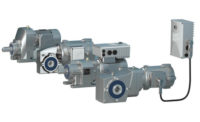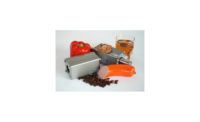When it comes to washing and sanitizing work environments, many food processors rely on wet cleaning methods. And, with the industry’s increasingly rigorous standards, processing facilities following a HACCP program may often utilize a wet cleaning method that validates the cleanliness of surfaces and equipment.
Although wet cleaning methods—using high-pressure water to pre-rinse and then hot water to clean the processing floor and equipment—is a practical and proven cleaning procedure, if not properly executed, wet cleaning could allow the growth of harmful microorganisms, failure to remove allergens and contribute to lost productivity and wasted materials. The issue, however, is not with the “wet” process of the cleaning, but the proper “drying.” As outlined in the Five Keys to Safer Food manual by the World Health Organization (WHO), drying is integral to the prevention of bacteria spreading; specifically, if an item is not completely dried, residual bacteria can remain. In fact, within six hours, a single bacterium can multiply to over 16 million.
Without understanding the associated safety risks, food processors continue to “cover up” water-sensitive equipment during wet cleaning with plastic wrap, new garbage bags or even other pre-used plastic. However, this covering procedure is time-consuming and inconsistent taping can quickly result in water infiltration and bacteria growth. In addition, items and surfaces may need to be re-stocked or re-purchased if they become wet and damaged, leading to financial and time loss.
To further understand the wet cleaning needs of today’s food processors, SCA, Sweden, commissioned an independent research study using a paper towel dispenser as its focus. In addition to a certification from HACCP International, Orlando, Fla., food processors seek a dispenser with improved safety and contamination deterrents, ease of refill, increased durability and water resistance.
What the study specifically revealed is that traditional dispenser designs no longer meet the safety needs of the modern food industry. Traditional designs can cause water to accumulate in crevices, become stagnant and harbor mold or harmful bacteria. Any hole or open seam can allow water to enter the dispenser, leading to damaged towels and costly replacements. With the enclosed design of dispensers, it may take days for personnel to discover the leak, allowing undetected harmful microorganisms to multiply.
To combat the risks faced when wet cleaning, food processors can look to HACCP International-certified, washdown-ready hand towel dispensers that have been designed specifically to mitigate water penetration (and associated bacteria growth) and streamline operational efficiencies.
“Creating effective change doesn’t have to be difficult,” says Donna Schaffner, associate director, food safety, quality assurance and training. “The introduction of washdown-ready equipment into facilities, such as water-resistant towel dispensers, is a simple yet integral step to creating and maintaining a healthy, safe and efficient food processing environment that adheres to today’s modern cleaning requirements.”
At a time when U.S. food processors are under the scrutiny of the USDA and the FDA, stakeholders wanting to mitigate risk, increase productivity and reinforce HACCP protocol should seek alternative modern equipment.



